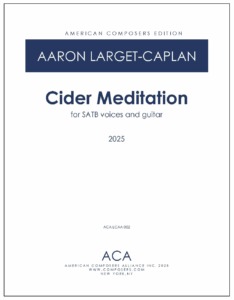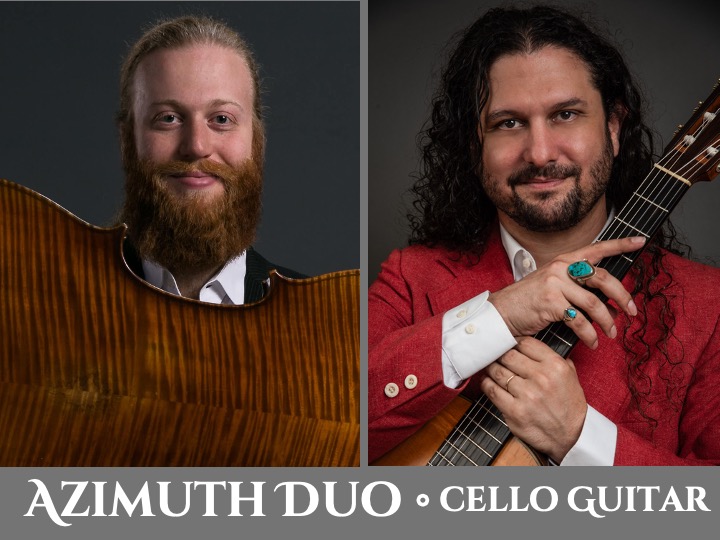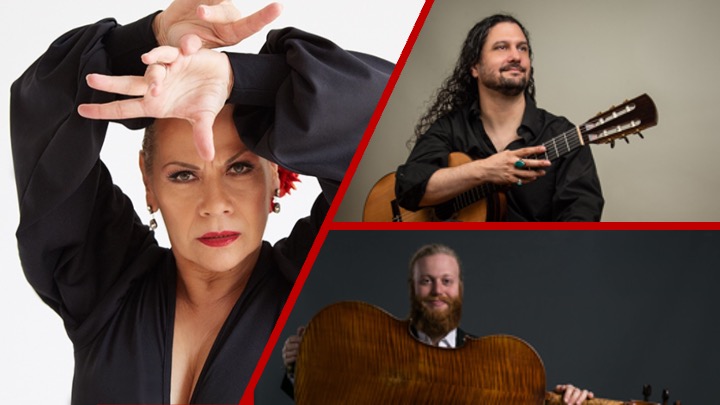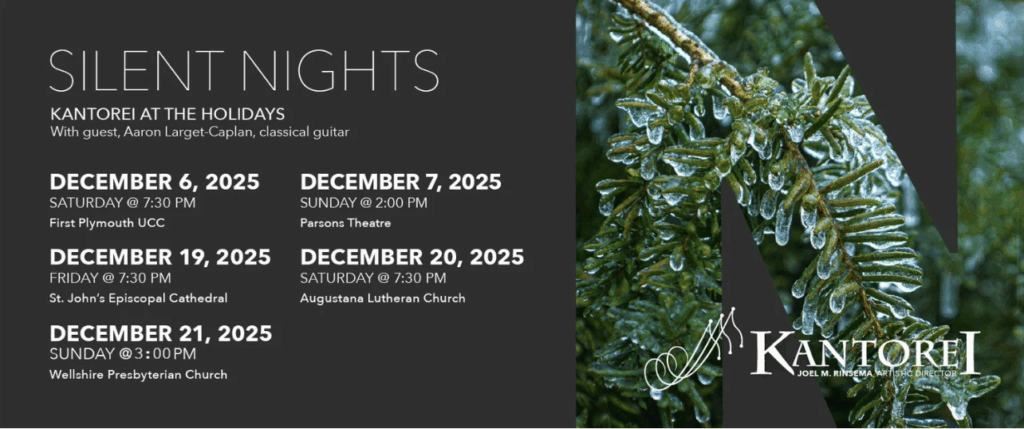Residencies in Colorado & Taos Concert
- Arts Residency, Concerts, Teaching, Touring
- No Comments
While out west Dec. 3-22 and between concerts with Kantorei, I will perform twice with the advanced choral group at Cherry Creek High School, my alma mater, the Meistersingers, give a 2-day residency for the Aspen Music Festival and School, a 1-day residency for Bravo! Vail, and a house concert in Taos, New Mexico.
All information can be found on my website calendar.
Aspen Music School and Festival: a two-day residency (12/8-9) where I will visit Lead Guitar programs in Carbondale and Basalt to work with young guitarists and aspiring musicians.
Bravo! Vail: 12/12 – a day performing and discussing being a professional musician at Black Mountain High School and the Community College.
CCHS: I will perform Jeffrey Van’s ’14 Angels’ at Cherry Creek High School with the advanced chamber choir, the Meistersingers, under Sarah Branton on December 5 & 10. (Dec. 5 info)
TAOS: I will return to Taos, New Mexico for a solo performance at the home of dear friend, Cee Bearden in El Prado. The performance includes a preview of pieces from my upcoming album, Guitar America 250. Info HERE.
Azimuth Duo
- Chamber Music, Ensemble, Touring
- No Comments
Stephen Marotto and I have partnered formerly as a duo of cello and guitar as the AZIMUTH DUO
Azimuth Duo traverses an arc across cultures and continents—where Spanish dances and love songs ignite, tangos smolder with longing, and American dreams shimmer with the promise of new frontiers. Performed by cellist Stephen Marotto and guitarist & composer Aaron Larget-Caplan, this duo blends passion, nostalgia, and discovery into a single horizon-seeking musical journey.
Based in Boston and playing together since 2019 as a duo and as a trio with flamenco dance, the Azimuth Duo is a classical music ensemble passionate in exploring cultural music dimensions, living composers, and presenting in traditional and atypical settings with excitement and precision.
**APAP Showcase Sunday Jan. 11, 6:30pm Regent Parlor @ Hilton Midtown NYC**
Artists
- Stephen Marotto – StephenMarotto.com
- Aaron Larget-Caplan – ALCGuitar.com
Programs Sample
- Albéniz: Asturias,
- Flaherty: Timeflies
- Granados: Spanish Dance #5 “Andaluza”
- Piazzolla: Café 1930 & Revirado
- Price: Adoration
- Rodrigo: Adagio from the Concierto de Aranjuez
- De Falla: Seven Spanish Folk Songs
- Villa-Lobos: Bachianas Brasileiras No. 5
Besides formal concerts, we are available for:
Community Outreach
- Educational programs in schools
- Community settings
Arts Residencies
- Middle & High Schools
- Community Music Programs
- Conservatories, Colleges & Universities
Contact & Booking Information
Rhizome Arts • www.rhizomearts.com • +1.305.998.9969 • glauco@rhizomearts.com
601 Brickel l Key Drive #700 Miami, FL 33131
Choir and Guitar in Denver
 In December, I return to Denver, Colorado, where I grew up, for a series of concerts with the choir Kantorei under the direction of Joel M. Rinsema, titled ‘Silent Nights‘. We will have 5 performances in the Denver area on the first and third weekends. Of special note, is the premiere of ‘Cider Meditation,’ a piece I wrote this year for Kantorei and commissioned by the Hatala Family. (program below)
In December, I return to Denver, Colorado, where I grew up, for a series of concerts with the choir Kantorei under the direction of Joel M. Rinsema, titled ‘Silent Nights‘. We will have 5 performances in the Denver area on the first and third weekends. Of special note, is the premiere of ‘Cider Meditation,’ a piece I wrote this year for Kantorei and commissioned by the Hatala Family. (program below)
KANTOREI INTERVIEW with AARON (click)
While out west, I will also perform at Cherry Creek High School, my alma mater, as well as a give residency for the Aspen Music Festival and School, and a house concert in Taos, New Mexico.
Aspen Music School and Festival: a two-day residency (12/8-9) where I will visit Lead Guitar programs in Carbondale and Basalt to work with young guitarists and aspiring musicians. Details on the calendar
Bravo! Vail: 12/12 – a day performing and discussing being a professional musician at Black Mountain High School and the Community College.
CCHS: I will perform Jeffrey Van’s ’14 Angels’ at Cherry Creek High School with the advanced chamber choir, the Meistersingers, under Sarah Branton on December 5 & 10. (Dec. 5 info)
TAOS: I will return to Taos, New Mexico for a solo performance at the home of dear friend, Cee Bearden in El Prado. The performance includes a preview of pieces from my upcoming album, Guitar America 250. Info HERE.
Aaron’s Concert Calendar HERE
SILENT NIGHTS PROGRAM (Choir-Guitar selections)
- Eight works by Jeffrey Van
- Individual works by Ryan Taylor, David Carney, Michael Fink
- Two works by Alf Houkom
- Cider Meditation by Larget-Caplan – world premiere
Music Career Talk
- Business, Interviews, New Lullaby Project
- No Comments
On Saturday October 25, I was invited by the Mu Phi Epsilon Boston Alumni to speak about my career.
Over the course of just over an hour I highlighted a bit of my studies, a few of my projects including starting the New Lullaby Project, various recordings, how I started arranging and composing, and some of the things that inspired me to build a performance career in classical music.
You are invited to take a listen and of course send me in questions.
A giant thank you to the Boston Alumni for the great questions, listening, and being so supportive over the last 25+ years!
New Lullabies in Newport
- Contemporary Music, New Lullaby Project, Touring
- No Comments
Newport Classical Kid’s Program
Presents
Aaron Larget-Caplan’s New Lullaby Project
October 12, 2025
Program
- A World of Your Own (2012) Jim Dalton
- Remembering (2021) Laurie Spiegel
- Ninna Nanna (2021) Pasquale Tassone
- Berceuse Inquiète (2021) Ronald Pearl
- Night Echoes (2025) – World Premiere (no. 81) Jinhee Han
- Lullaby (2020) Stepan Rak
- Stuff at Night (2024) Larget-Caplan
- Counting Backwards (2021) Anthony Green
- Midnight Train (2021) Ian Wiese
- All Through the Night (2024) Keane Southard
New Lullaby Project
- Begun in 2007 by Aaron Larget-Caplan, the New Lullaby Project present bridge the chasms of fear of contemporary music to audiences and composers in writing for the guitar. Since then it has premiered of over 80 New Lullabies by 75 composers from 12 countries, issued three albums and two anthologies of scores published by the American Composers Alliance.
Who’s afraid of a lullaby?!
- There are two basic types of lullabies: one gives the listeners warmth and protection, while the second tends to be darker with hints of fear. The former calls for good dreams to the wary soul and lets him know that he will awake safely in a better tomorrow. The latter lives on the idea that night and even sleep can be dangerous. Maybe this comes from the folk tradition of tempering our demons by singing to them, voicing our fears that are greater than our worldly matters, or the simple truth that one can catch a cold if one’s feet are not fully covered while sleeping.
Rhizome Arts – New Management
Rhizome Consulting to Represent Acclaimed Guitarist Aaron Larget-Caplan for Touring Residencies and Engagements
Boston, Sep. 2025 – Rhizome Consulting (RhizomeArts.com) announces a new strategic advisory and representation partnership with internationally acclaimed guitarist and composer Aaron Larget-Caplan, supporting touring residencies, engagements, and the continued growth of his visionary concert program, Revolutions in Music.
Hailed by The Washington Post as “a riveting artist,” Aaron Larget-Caplan is redefining the classical guitar experience. His electrifying program, Revolutions in Music, reimagines the American sound with daring originality—spanning George Gershwin’s elegance, Leonard Bernstein’s vitality, John Cage’s experimental spark, Alan Hovhaness’s mysticism, and Florence Price’s lyrical beauty. The journey extends further, as Aaron gives new voice to the words of Edgar Allan Poe, the poetry of Paul Simon, and the iconic riffs of Eddie Van Halen—all transformed through six strings.
Rooted in Boston’s revolutionary spirit, Revolutions in Music is more than a concert: it is a bold, genre-defying celebration of liberty, imagination, and 250 years of American voices in guitar composition.
Aaron’s artistry has earned praise from critics around the world:
- “Delicious and poetic.” – Six Strings of the World (Poland)
- “A performer with all the skill and energy required to deliver a truly remarkable contemporary work.” – Classical Guitar Magazine
- “Stunningly played…a fine player, with a keen ear for new music.” – Fanfare
Through this partnership, Rhizome Consulting will provide strategic advisory, representation, and touring support to expand Aaron’s performance and audience reach, develop meaningful residency opportunities, and connect communities with concerts that inspire across generations.
“Aaron is a visionary artist whose work challenges boundaries and inspires audiences in equal measure. We are honored to represent him and to share his remarkable artistry with stages and communities worldwide,” said Glauco Araujo, Creative Director of Rhizome Consulting.
About Aaron Larget-Caplan
Boston-based guitarist, composer, and recording artist Aaron Larget-Caplan is celebrated for his fearless commitment to expanding the guitar’s repertoire and his innovative approach to programming. He has performed worldwide—from Spain and Russia to venues across the United States—and is recognized for his artistry, intellect, and passionate advocacy of new music.
About Rhizome Consulting
Rhizome Consulting (RhizomeArts.com) provides strategic visioning, touring representation, and fundraising expertise for artists, ensembles, and organizations dedicated to cultural impact through the performing arts.
Media & Booking Inquiries
- Rhizome Consulting
- 📧 Kristopher@rhizomearts.com Booking Contact
- 📧Glauco@rhizomearts.com Media Contact
- 🌐 www.RhizomeArts.com
- 🎥 Watch: Aaron Larget-Caplan – Revolutions in Music
Interview – Revelations on Guitar
- Concerts, Contemporary Music, Interviews, Touring
- No Comments
Thank you to The Provincetown Independent and reporter Eve Samaha for the wonderful interview about finding guitar and the upcoming concert on Cape Cod in Wellfleet on Saturday Sep. 13.
Read the full article: https://provincetownindependent.org/arts-minds/2025/09/10/revelations-on-guitar/
Autumn 2025 Concerts
- Concerts, Contemporary Music, New Lullaby Project
- No Comments
Dear Fans and Friends,
Though summer and the scent of Plumeria linger in the garden amongst the still flirtatious birds, the 2025-2026 music season has begun. I am honored to share so much music with so many. I’m especially excited for the premiere of my first work for choir and guitar, “Cider Meditation” which will be premiered in Colorado in December. The score will be published by the American Composers Alliance.
**Go to my CALENDAR for full concert details**
September – 4 different programs in the month with 5 concerts, including:
- Rune of Hospitality by Alf Houkom for choir and guitar in Boston with Mark David Buckles (9/6).
- A Latin American program in honor Hispanic Heritage Month in Hingham, including 2 premieres by Carlos Mauro (Colombia) and Luis Obregon (Mexico) (9/10).
- Revolutions in Music, multiple premieres for Cape Cod including Cloud Lacrymae for guitar & electronics by Douglas Knehans (9/13).
- Composing for Guitar at Boston University (9/16)
- Words and Music with poet Charles Coe, presented by Convergence Ensemble (9/28).
- An afternoon of New Lullabies at King’s Chapel (9/30)
October
- Debut with the Newport Classical music festival in all-ages New Lullaby Project program (pajamas welcome, milk & cookies to be served alongside contemporary music). New Lullaby Project premiere #79 by Jinhee Han (Korea). (10/12)
- A few days in Portland, Oregon
- Music in Life, A Life in Music – Talk on my career in Music, Mu Phi Epsilon, Boston Alumni
December
- Six Colorado concerts mark my debut with the choir Kantorei directed by Joel Rinsema as well as the world premiere of my composition ‘Cider Meditation’ for choir & guitar!!
- A two-day residency for the Aspen School of Music schools program.
* All events are open to the public
Visit ALCGuitar.com/calendar for concert details
New Publications Coming!
- Composing, Fractured Atlas, Publishing
- No Comments
Dear Fans and Supporters,
There are multiple new publications for guitar, piano, and large ensemble on the way.
I am so grateful for the support of Catherine, my publisher American Composers Alliance, and my mentors and composer friends who inspire me each day.
I am inviting you to be a patron of the arts by being a part of the creation process.
Have your name or that of a loved one or organization connected with the music forever by having a work dedication.
Being a patron is not new. Mozart would tell his patrons he had a new concerto and collect money to help support the performance and once he had enough money, he would write the music!
Multiple living composers have reached out to me to have my name added to a work.
All of the compositions in honey cadence have dedications and we are grateful for the support.
It is a wonderful way to support the arts directly and it is tax deductible(!) via Fractured Atlas (fiscal sponsor).
If you are interested, please email me directly at Aaron[at]ALCGuitar.com.
Sincerely,
Aaron
















